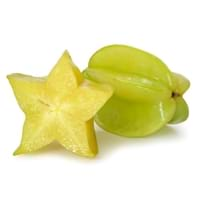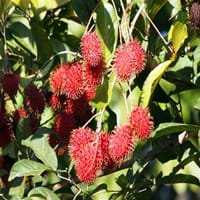Health Benefits
Cancer prevention, Heat stroke treatment
Anti-oxidant properties, Boosts immune system, Skin rejuvenation, Strengthening of bones
General Benefits
Anti oxidant properties, Anti-inflammatory properties, Digestive aid, Maintains healthy cholesterol level, Treatment of sore eyes
Antiseptic properties, Cures headache, Removes waste from kidney
Skin Benefits
Anti-aging benefits, Heals sunburn, Skin rejuvenation
Hydrates skin
Hair Benefits
Promotes longer and healthier hair, Protects hair
Good conditioner
Allergy Symptoms
NA
Chest pains, Rhinitis, Wheezing
Side Effects
Nausea, Vomiting
Unknown
Best Time to Eat
As a snack in the late afternoon, Eat the fresh ones, avoid mixing with any other foods, don't eat after meal., Strictly avoid empty stomach
As a snack in the late afternoon, Don't consume at night and before bed, Eat the fresh ones, avoid mixing with any other foods, don't eat after meal., Morning time (before lunch)
Vitamin B5 (Pantothenic Acid)
Vitamin C (Ascorbic Acid)
Vitamin K (Phyllochinone)
Phytosterol
Not Available
Calories in Fresh Fruit with Peel
Calories in Fresh Fruit without Peel
Not Available
Not Available
Calories in Frozen Form
Not Available
Calories in Canned Form
Not Available
Type
Tree fruit
Tree fruit, Tropical
Season
Autumn, Spring, Summer
Early summer, Early winter, Late fall, Late spring
Varieties
King, Bell, Sri Kembangan, Arkin and Fwang Tung
Rongrien, Chompu, Rapiah, Bingjai and Lebak Bulus
Color
Golden yellow, Green
Coral red, Yellow
Inside Color
Yellowish Green
Greyish-white
Shape
Oval and Star(Cross section)
Round
Taste
Crisp, Juicy, Sweet
Sour, Sweet
Grows on
Not Available
Trees
Soil Type
Loam, Well-drained
Clay, Loam
Climatic Conditions
Moist, Warm to hot climate
Humid
Facts about
- When carambola is cut horizontally, it forms a star.
- It is believed that carambola helps to cure hangover.
- Entire carambola is edible, including its skin.
- 2 varieties of carambola are cultivated: tart & sweet.
- Oils extracted from its seeds is used to make soaps and candles.
- 'Rambut' means hairy in Malay.
- It makes the best hair mask.
- Seeds are edible and healthy too.
Top Producer
Taiwan
Thailand
Other Countries
Australia, Guyana, India, Israel, Malaysia, Philippines, United States of America
Africa, India, Indonesia, Malaysia, Philippines, Sri Lanka
Top Importer
Europe
Singapore
Top Exporter
Malaysia
Thailand
Botanical Name
Averrhoa carambola
Nephelium lappaceum
Synonym
Not Available
Rambota
Subkingdom
Tracheobionta
Tracheobionta
Division
Magnoliophyta
Tracheophyta
Class
Magnoliopsida
Magnoliopsida
Order
Oxalidales
Sapindales
Family
Oxalidaceae
Sapindaceae
Species
A. carambola
N. lappaceum
Generic Group
Not Available
Not Available
Difference Between Carambola and Rambutan
We might think that Carambola and Rambutan are similar with respect to nutritional value and health benefits. But the nutrient content of both fruits is different. Carambola and Rambutan Facts such as their taste, shape, color, and size are also distinct. The difference between Carambola and Rambutan is explained here.
The amount of calories in 100 gm of fresh Carambola and Rambutan with peel is 31.00 kcal and 69.00 kcal and the amount of calories without peel is Not Available and Not Available respectively. Thus, Carambola and Rambutan belong to and category.These fruits might or might not differ with respect to their scientific classification. The order of Carambola and Rambutan is Oxalidales and Sapindales respectively. Carambola belongs to Oxalidaceae family and Rambutan belongs to Sapindaceae family. Carambola belongs to Averrhoa genus of A. carambola species and Rambutan belongs to Nephelium genus of N. lappaceum species. Beings plants, both fruits belong to Plantae Kingdom.









